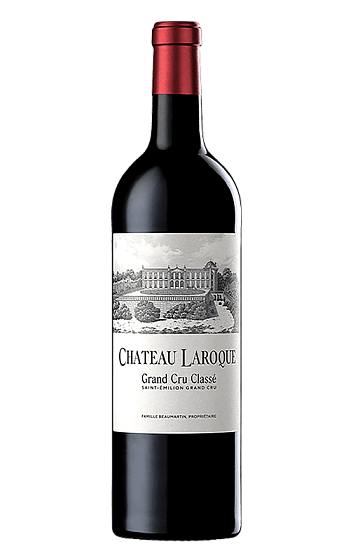Château Laroque 2018
Description
Ce Grand Cru Classé est né sur l'un des points les plus élevés de Saint-Emilion,
ce
qui lui confère un résultat brillant avec des notes florales et épicées, une salinité fraîche et une texture noble, des caractéristiques qui définissent ce domaine incroyable et magnifique
Fiche technique
Dégustation
Vignoble et élaboration
L'avis des experts
This well-textured, rich wine has a firm texture that promises a future of smoothness and concentration. Touches of vanilla from wood aging combine with ripe black-currant fruits in a wine that should be ready from 2026. - Roger Voss.
The 2018 Laroque is composed of 97% Merlot and 3% Cabernet Franc, aged in 50% new barriques. The alcohol is 14.5% and the pH is 3.48. Deep garnet-purple colored, it bursts from the glass with flamboyant notes of stewed black plums, Black Forest cake and boysenberries, plus hints of candied violets, star anise and unsmoked cigars with a playful waft of sassafras. Medium to full-bodied, the palate is packed with juicy black fruits, supported by plush tannins and tons of freshness, finishing long and fragrant. - Lisa Perrotti- Brown.
Aromas of ripe blackcurrants, spiced cherries, cloves, praline, tea leaves and crushed gravel. It’s medium-to full-bodied with firm, tightly knit tannins and fresh acidity. Fleshy, chewy layers lead to a long, mineral finish. Late bottling helped here. Try from 2023.
This estate is in a cool, limestone terroir on the eastern side of Saint- Emilion, and it's been firing on all cylinders over the past decade, in no small part due to the talented director, David Suire. The 2018 Château Laroque checks in as almost all Merlot (there is 3% Cabernet Franc) that comes from an incredibly strict selection of just 41% of the total production. Brought up in a mix of new and used barrels, it's more about finesse than power, offering a gorgeous perfume of ripe black cherries, mulberries, cassis, violets, spring flowers, and chalky minerality. Medium to full-bodied, pure, and incredibly elegant on the palate, it builds nicely with time in the glass, has ultra-fine tannins, flawlessly integrated tannins, acidity and fruit, and a great finish. It's as classy as they come. Approachable today with a decant, it will drink nicely for 20 years or more. Readers looking for an impeccably made, classic, high-quality Saint-Emilion that doesn't break the bank should back up the truck for this beauty.
Wonderful combination of aristocratic elegance – rather airy and light – with the opulent, ripe dark fruit typical of the hot vintage, leaving an impression of both refinement and richness. The texture of the tannin is 'thicker' than the 2016, fuller-bodied, but Suire’s emphasis on limestone freshness is realised more than ever, conveying wet stone minerality beyond the ripe fruit. A great with an especially long finish. Try with Beef Wellington.






Millésimes: 2024 2023 2018
Nos membres n’ont pas encore laissé de commentaires pour ce millésime. Cliquez sur les millésimes précédents pour accéder aux commentaires.
Nos membres n’ont pas encore laissé de commentaires pour ce millésime. Cliquez sur les millésimes précédents pour accéder aux commentaires.
Nos membres n’ont pas encore laissé de commentaires pour ce millésime. Cliquez sur les millésimes précédents pour accéder aux commentaires.